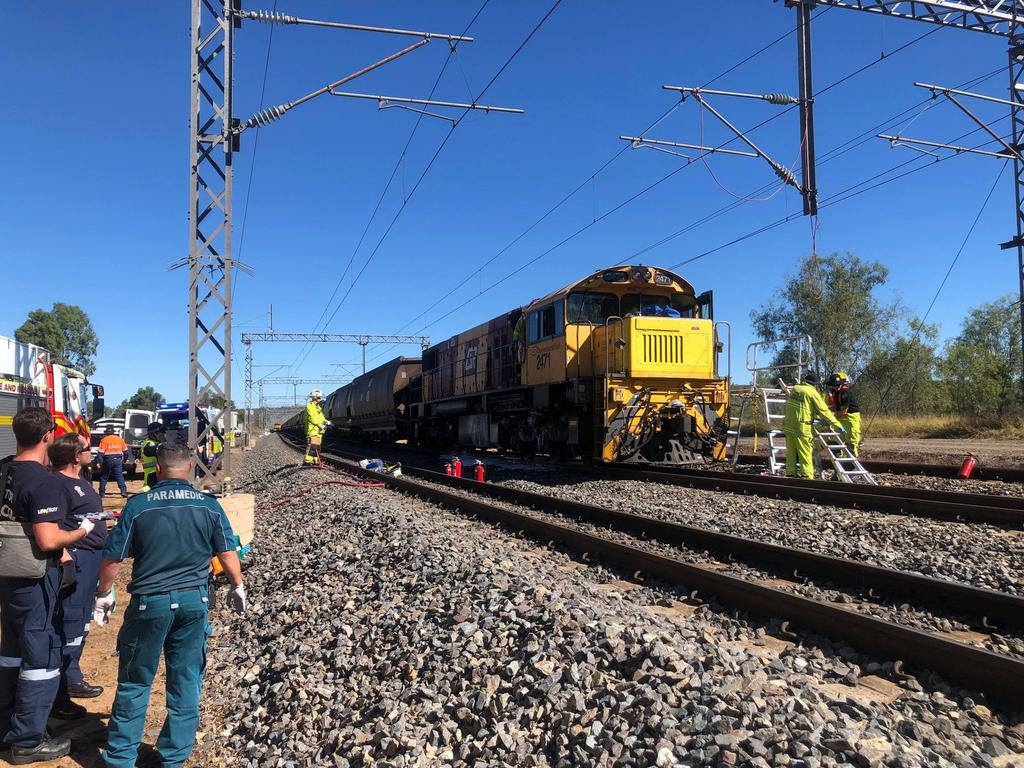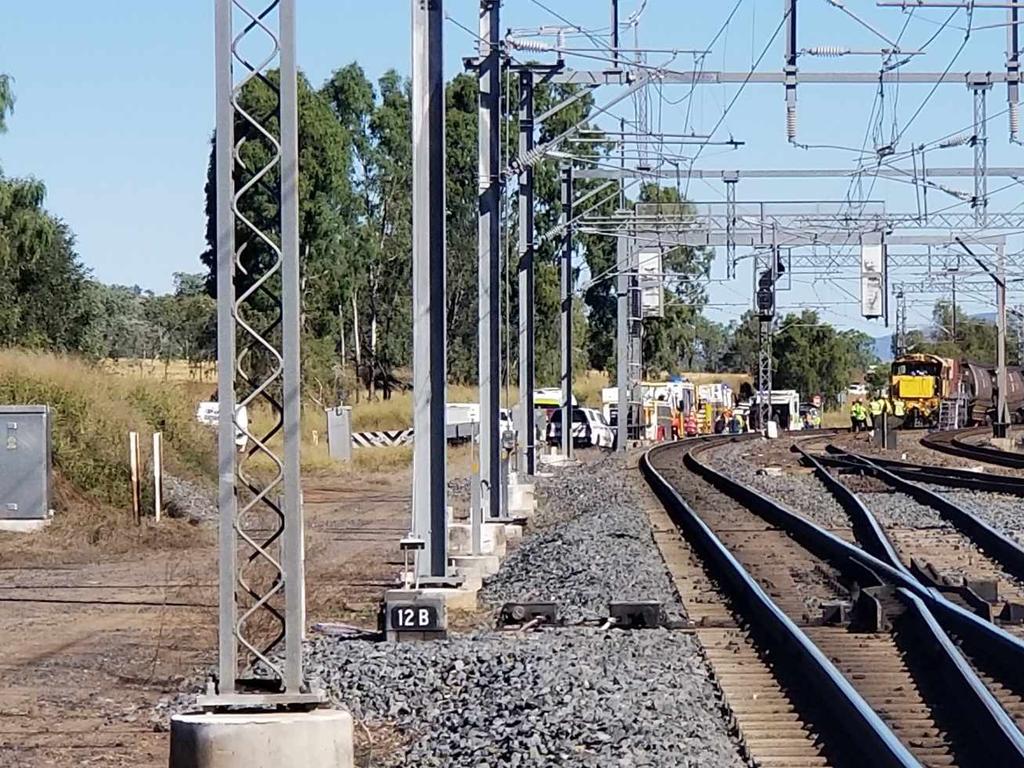Queensland Rail fined over Westwood train collision which killed Chris O’Brien
One family’s lives were shattered, another man’s world turned upside down, all because of a ‘cost cutting’ exercise where signals were missed resulting in a two train collision.

Police & Courts
Don't miss out on the headlines from Police & Courts. Followed categories will be added to My News.
One family’s lives have been shattered, another man’s world turned upside down, all because of a ‘cost cutting’ exercise that resulted in two trains colliding in a fatal accident.
Queensland Rail employees, Chris O’Brien, and another train driver, were being supervised by a third man – Andrew Rose – when they were performing a long-end leading manoeuvre (driving the train in reverse) when it collided with another train at Westwood on June 18, 2021.

Mr O’Brien died in the collision, while the third man sustained minor injuries and Mr Rose sustained a brain injury, whiplash and suffers from post traumatic stress disorder.
Mr Rose is no longer able to work because of his injuries.
QR regional director Scott Cornish, on behalf of the company, entered pleas of guilty in Rockhampton Magistrates Court yesterday to two charges of duty to take reasonable care that acts or omissions do not adversely affect the safety of other persons, and fail to comply with said duty.
It was the first time a company was convicted of this charge in Queensland.
She said Mr O’Brien’s death “clearly had catastrophic consequences” on the lives of his wife of 16 years and partner of 21 years, and his two daughters.
His widow, Tiara, said the last message she sent her husband was ‘you are stuck with me until death do us part buddy’.
“I didn’t know that would be less than 20 hours later,” she said in her victim impact statement which she read out in court.
Prosecutor on behalf of the Office of the National Rail Safety Regulator, Sarah Farnden KC, told the court the layout of the locomotive (driver’s cabin) whereby there are two seats for the driver and the driver assist which did not swivel around completely which meant when driving long-end leading, the drivers had to take their eyes of controls to look out small windows for signals.
“If the locomotive is long-end leading, the driver is required to sit perpendicular, essentially, to the view; and the views on one side and the controls on the other,” she said.
“The practice of long-end leading, because of the position the driver is seated in, and because of the view the small windows looking past the entire front part of that locomotive creates additional risks involved when driving trains …. in being able to see the signals and other hazards.”
Ms Kahlert said all three men missed two important signals as a result of this – the yellow signal to slow down and the red signal to stop.
Mr O’Brien had been qualified for about four months and the co-driver for six while Mr Rose, the tutor, had nine years of experience with another company and three with QR.

“The safety management system did not adequately address the additional specific risks and controls associated with long-end leading,” Ms Farnden said.
The court heard QR had carried out a risk assessment for this practice, but on a different line – the Emerald one – months prior to the fatal crash.
Ms Farnden said there were amendments made to the Emerald local operating procedures with some of those amendments added to the Blackwater line, however, that risk assessment “did not translate across to this area of track and there were various considerations that were different or not covered in that risk assessment”.
“That risk assessment also failed to consider residual risks,” she said.
Ms Farnden said there was no consideration given to whether the tutor driver should be seated when supervising two trainees.
“The practice was there were two trainee drivers, and the tutor driver was seated in the middle in a position where he was unable to see through any windows,” she said.
Ms Farnden said the other risks not covered by that risk assessment included workload changes, the hazards arising from the seat position, the poor posture of the driver and the positions of the seats impacting the driver and driver assist ability to see signals and speed boards.
She said the second charge QR pleaded guilty to concerned the lack of training regarding long-end leading.
“Long-end leading, as a particular concept, was not covered in training policies or procedures,” Ms Farnden said.
“There was casual or informal training done, which was being done of this occasion, but not formally documented.”
Ms Kahlert said she understood the other practice of using two locomotives – one at each end- where there is no area to turn the train around “would have been, no doubt, expensive”.
“Given the level of risk of a system relying on visual observations of external signals via a driver in a narrow door window … I consider the offending in this particular incident concerning,” she said.
After this fatal crash, long-end leading was banned across Queensland.
However, the court heard QR has reinstated the practice, but only in “special circumstances”.
“Queensland Rail remains deeply saddened by this incident and the loss of a colleague,” Mr Cornish said.
“We continue to support our people and the families of the drivers involved.
“We remain committed to operate a safe railway and to learn from this incident and do all that we can to prevent it from happening again — we want to ensure that when our people come to work, they work safe and go home safe.
“We will also continue to work with the Office of the National Rail Safety Regulator to learn from this tragic incident and do everything we can to ensure it does not happen again.
“Since this incident, we have implemented a range of measures to improve safety on the network.”
The maximum penalty for this offence is $1.5 million and there was only a New South Wales from 2019 the Queensland court could use for guidance in this case.
The prosecutor argued for fines no less than $700,000 each with convictions recorded while the defence argued for $400,000 total and no convictions be recorded.
Ms Kahlert ordered QR to pay $600,000 for both offences and no convictions were recorded.
“Hopefully, this will never happen again,” she said.
More Coverage
Originally published as Queensland Rail fined over Westwood train collision which killed Chris O’Brien








